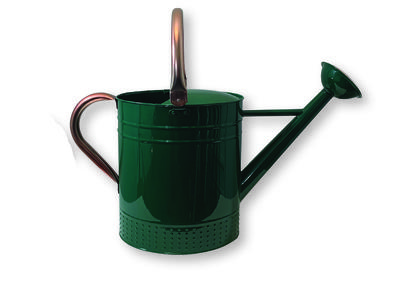
Going peat-free
It’s May, oh my! Of course every month is different, but there’s really no month like May. The freshest green, every year impossibly seems to be greener than last year. With the longest day soon arriving on the 21st June, we see lovely long daylight hours but still the weather can be fresh and the soil usually not showing signs of drying out.
Although it is perhaps no longer safe to assume that soils are actually damp in spring. With climate change every year seems unique, with cold snaps, dry periods, heat waves and serious rain all coming in bouts that always come as a surprise. As gardeners, how we create gardens, and garden in ways that enable us to be adaptive and resilient in the face of climate change, is key to keeping our gardens full of life and signs of hope.
May is generally when the risk of frost has passed, and tender bedding plants can be put out in pots, window troughs and hanging baskets. Many of these tender plants such as pelargoniums (often called geraniums) are from mediterranean climates, where they flower as long as there is warmth and water. So through our British summer, they flower on and on provided they’ve got moisture and a bit of nutrients at their roots.
For decades, the potting compost most gardeners have used in tubs and baskets has been almost entirely composed of peat. In the UK, most of this peat is harvested from irish peat bogs, where it took hundreds or thousands of years to accumulate under bog conditions that exclude oxygen and thus prevent decomposition. As such, peat bogs are a huge sink of atmospheric carbon, as the plants that grow on them capture carbon from the air, and then die and become preserved as peat in the bog.
When peat is harvested and used as potting compost, not only is the natural peatland degraded and habitat damaged, but the carbon locked up in the peat is slowly released back to the atmosphere, contributing to climate change. As such, the sale of horticultural peat will be banned in a move to protect precious peatlands. The sale of peat for use by home gardeners will be banned by 2024. As such, gardeners used to growing in peat-based composts will need to adapt to using the other products available on the the market, or making their own composts.
Many gardeners have already made the switch, or gradual transition, to peat-free growing. The various different blends on the market are usually based on a range of other materials, such as coir fibre from coconuts, composted bark, composted green waste, and composted bracken and sheeps wool. All of these have differing properties to each other, and compared to peat. Water holding and retention, their ability to re-wet once dry, their susceptibility to becoming boggy or over-watered. Try a few products, start small and be prepared to adapt. It’s spring after all, a time for new growth, and new ways!


